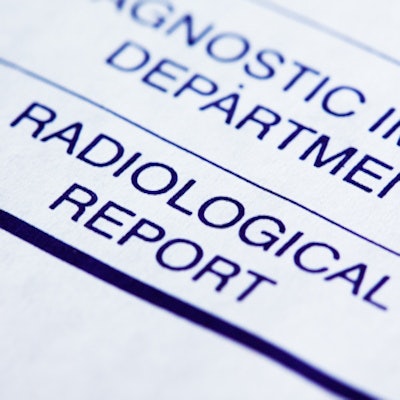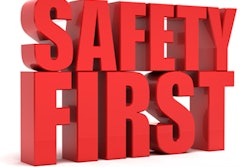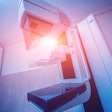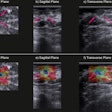
Radiology trainees should be formally taught how to write high-quality radiology reports to avoid getting stuck with flawed techniques that could potentially harm patients, according to a U.K. expert source.
Dr. Thomas Wagner, a consultant nuclear medicine physician at the Royal Free London NHS Trust, warned of a "big gap in radiology teaching" regarding report writing.
He said, "No one is teaching registrars how to report -- there is no structured way of learning it, they just kind of absorb it by bits and pieces from the consultants they like or respect."
 Dr. Thomas Wagner.
Dr. Thomas Wagner.But there was "significant evidence" that some approaches to report-writing were better than others, and skills could be learned, he told a recent webinar hosted by the British Institute of Radiology (BIR).
"I think it would make a very big difference to the quality of reports if it's taught at the registrar level," he said. "Once people are established and have some experience, they're not going to take feedback on their reports very kindly -- the way they report is kind of entrenched."
Wagner said structured reports could improve diagnostic accuracy, but there was some resistance to their use and a risk of increased error rates if used improperly. He said structured templates could be developed that were suited to the needs of clinicians and multidisciplinary teams, helping to improve communication with referrers.
The webinar detailed the do's and don'ts of report-writing, as covered by AuntMinnieEurope.com earlier in May, before grappling with wider impacts for education, clinical, and patient communication.
Dr. Michael Hartung, assistant professor of radiology, abdominal Imaging and intervention, University of Wisconsin-Madison, said even one lecture a year would be "a tremendous step forward" for any training program. "I don't think it has to be a lot more than that to be effective," he said.
He said reports shouldn't be seen as a box to be ticked, or the last word in a clinical investigation, but part of a feedback cycle that could enhance the accuracy and content of reports.
"Our reporting cannot help but improve if you engage in this essential feedback and improvement cycle. I believe this emotional engagement is a major reason that cases we follow up become so memorable," he noted.
Hartung has put together a 28-minute YouTube.com video on how to write a great radiology report.The BIR webinar speakers also told how more patients were asking to see radiology reports written about them, either directly or via online patient portals.
Should radiologists write reports differently and change the language they use because patients might read them?
Hartung said, "I do try to palliate the patient's anxiety if I can with my reporting. We've all come across unhelpful shopping list impressions that detail nearly every passing observation the radiologist makes. They create unnecessary patient anxiety and trigger inappropriate follow-up investigations.
"It's important to think of the audience receiving the report and how they'll perceive those words and what kind of language you can use to make that mental perception of the disease more accurate."
The webinar heard how automatic translation software is being developed that would make technical language from a typical radiology report more accessible to a lay person who may not have a medical background.
Dumbing down
Dr. Adrian Brady, a consultant radiologist at Mercy University Hospital Cork in Ireland, was keen that colleagues should not "dumb down" the information they give in reports to make reports more easily readable by the patient.
 Dr. Adrian Brady, first vice president of the European Society of Radiology.
Dr. Adrian Brady, first vice president of the European Society of Radiology."It's a good thing if patients can access them but they're not the primary readers. We're writing them for the referrer/physician who is usually trying to utilize the information we give them to make a clinical decision with which they can advise the patient," Brady pointed out.
He said that he advises radiology trainees they had to some extent to "triage" the language they used, according to who the referrer was and their level of knowledge -- whether they were a family practitioner or specialist such as a nephrologist, for example.
"But once you've reported accurately and helpfully to the referrer, you can't spend all day considering who else might read the report. If you did, you simply won't get through the work to be done," Brady noted.
Speakers at the BIR webinar also discussed how to make clear recommendations in their reports to clinicians and avoid making clinically insignificant ones.
Dr. Anant Patel, a consultant respiratory physician at the Royal Free Hospital in London, offered a clinician's perspective. "I like it if a particular follow-up investigation is suggested by a radiologist, that's often quite helpful."
Brady said, "If we can give an answer based on our expertise, we should give it; if we cannot, and we know who is the best person to give that answer, then we should say so."



















